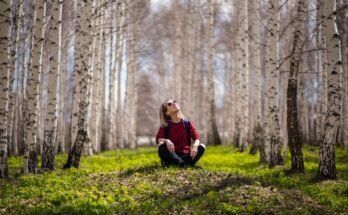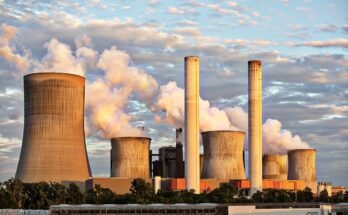An ecosystem is a complex, dynamic system of interacting organisms (biological) and non-living entities (physical) affecting one another. It includes all of the living and nonliving (biological) elements in an ecosystem that balance each other for the support of life. The relationships between organisms in an ecosystem are necessary for the transfer of energy and nutrients that sustain life processes. Every component, from the tiniest microorganism to the biggest predator, is indispensable to the system’s stability and health.
How Ecosystems Work: The Living and Nonliving Parts
Biotic or Biological Components
Biotic factors are the living parts of an ecosystem. These can be classified into producers, consumers, and decomposers:
- Step 1: Producers (Autotrophs) Producers or Autotrophs are organisms (mainly plants and algae) that manufacture their own food. They sit at the bottom of the food chain, converting solar energy into the chemical energy that sustains all other life.
- Consumers (Heterotrophs)Consumers are known as such because they consume other organisms. They can be classified as herbivores (primary consumer), carnivores (secondary or tertiary consumer) or omnivores (those who eat both plants and animals).
- Decomposers (Saprotrophs): Some organisms like bacteria, fungi, and earthworms decompose dead matter and waste, returning important nutrients to the soil which can be used again by producers.
2. Physical (Abiotic) Components
Abiotic factors are the entities of an ecosystem that are not living but have an effect on living organisms. These include:
- Climate:Temperature, precipitation, and humidity are key factors in the types of organisms that can survive in an ecosystem.
- Soil: It influences plant growth, which is a base of the entire food web. Soil quality and nutrients are key to producers’ health and, by extension, the health of the ecosystem in general.
- Water: All living organisms need water for survival. Water availability and quality are responsible for limiting what species can live in a given area.
- Sunlight: Sunlight is the sunlight energy source to the majority of ecosystems; plants as well as algae use sunlight energy source to accomplish photosynthesis, a vital process for plants to grow, and for organisms from base to obtain energy in a needed method.
- Air(gases): Oxygen and carbon dioxide are critical gases in ecosystems. Oxygen aids respiration in animals and other organisms, while carbon dioxide is essential for photosynthesis in plants.
Interactions between biotic and abiotic components
An ecosystem functions through complex interactions between its biotic (living) and abiotic (non-living) components. These interactions can be grouped into several processes:
1. Energy Flow
The energy earth is an ecosystem that starts with the producers. These organisms absorb sunlight and transform it into chemical energy via photosynthesis. Producers are eaten by primary consumers (herbivores), primary consumers are eaten by secondary consumers (carnivores), etc. At each stage, energy is passed on to the next link in the chain, but is also lost in the form of heat through metabolism. This forms a food chain or food web, that explains how energy flows from one dancer to another.
2. Nutrient Cycling
Ecosystems keep cycling of nutrients such as carbon, nitrogen, phosphorus, and water. Decomposers help process yet more organic matter, putting precious nutrients back in the soil and water, so producers can utilize them. This cycling allows essential ingredients to be reused to support living things. For example, in the carbon cycle, carbon dioxide in the atmosphere is turned into organic compounds by plants, and then respired and decomposed back into the environment.
3. Trophic Interactions
Every organism at every level of the food chain interacts by consuming one another. This is how these interactions structure the ecosystems. Predators keep prey population sizes in check, and herbivores control plant populations. These interactions contribute to the equilibrium of ecosystems. Mutualistic relations which benefit both species and symbiotic interactions, where species have physical contact, also shape the structure of the ecosystem.
The Balance of an Ecosystem
The many ecosystems tend to maintain a natural balance (the ecological equilibrium). But this balance is fragile and can be broken by natural phenomena like storms and wildfires, or human-mediated factors like pollution, habitat destruction and climate change. Ecosystems rely on the right balance of factors to maintain functional processes, and deviations can lead to changes in the populations of species, the flow of energy, and loss of biodiversity.
1. Ecological Succession
Ecological systems are not static, they change with time. Ecological succession — the gradual process of change and replacement in the species composition of a given area. It occurs in two phases:
- Primary Succession – occurs in an area that has never had an ecosystem before, such as bare rock after a volcanic eruption. During the years, lichens, mosses, grasses, and shrub, and then trees, to name a few, settle the land and a mature ecosystem develops.
- Secondary Succession: This type takes place in regions where an ecosystem has been disturbed or damaged, for example, something like a forest fire. The soil is still there, so recovery happens more quickly, and plants and animals return sooner than in primary succession.
Human Impact on Ecosystems
Ecosystems are greatly impacted by human activities. Things like deforestation, industrial pollution releasing toxic waste and urbanization, and the over exploitation of resources lead to loss of habitats and ecosystem destruction. With the burning of fossil fuels, climate change is also changing ecosystems and patterns of rainfall, temperature and sea levels.These changes directly affect how and if species can adapt and survive, resulting in shifts in biodiversity.
This initiative make sure the ecosystems will risk protected and maintain our life-support system through establishing protected areas, sustainableagriculture, and mitigation greenhouse gases.
Conclusion
Ecosystems exist in dynamic equilibrium between interdependent biotic and abiotic factors. These interactions are the interactions of energy and nutrients that are necessary to sustain life in an ecosystem. But this balance is fragile and can be easily disturbed by either natural events, such as a volcanic eruption, or by human activity. If society has any hope of keeping the planet healthy — not just for those who will come after us but for people alive now too — understanding these interactions — along with the necessity of protecting ecosystems — is key. We can do our sense in helping the ecological balance also diversity of ecosystem by making sure that we observe sustainability and conservation purposes.



